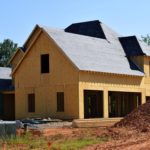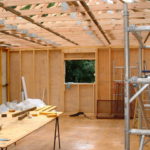
What is asbestos?
Asbestos is a building material that was used in the construction of homes prior to 1980. It was often used in ceilings, air ducts, insulation, flooring and roofing materials. This naturally occurring mineral fibre was found to cause severe health problems if the spores were inhaled and so it is no longer used in the construction of buildings. The problem is that it isn’t easy to tell whether a material contains asbestos or not so anyone undertaking DIY projects in the home need to proceed with caution.
Dispelling the myths
The fact is many homes contain asbestos in their construction materials. It is easy to become alarmed at the suggestion your home may contain asbestos but there is often confusion and misunderstanding about this widely-feared material.
Provided that the asbestos is left intact and untouched and it remains in a good condition, then it should not do you any harm. It is only when the asbestos is damaged or disturbed that harmful asbestos spores may be inadvertently released and inhaled.
If you are unsure whether your home contains asbestos, then you’ll need to get a trained professional in who can undertake sample analysis for you. Never attempt to try and do this yourself as you may only disturb, damage or release the dangerous asbestos spores.
What if you find asbestos in your home?
Do not touch the asbestos – leave it alone. If you are undertaking any DIY activities in that area 
Don’t saw or drill holes into asbestos-containing materials and never dust or sweep debris that may contain asbestos. Don’t walk this material all over the house as you are increasing the proliferation of the spores. Instead, clean any offending areas with a wet mop.
If your flooring contains asbestos, then don’t use a power stripper on it or try to sand it. If you need flooring replaced that contains asbestos, then install new floor covering over it.
What if the asbestos is damaged?
Damaged asbestos requires professional intervention so always leave it to the experts. If you suspect asbestos damage, then get on it right away. It will either need repairing or removing. Repairing usually involves sealing or covering the asbestos. Removal is usually the last option as it’s a complex procedure but may be necessary if you are planning a major remodeling project to your home.
If you are unsure about whether your home has asbestos or whether it may be damaged and likely to cause harm, always consult a professional. It can never hurt to seek professional advice and be sure rather than take the risk of damaging your and your family’s health.
Guest Post By:
Article written by A. Elliott, a writer with an interest in interior design and home improvement, this article was written for Ashbrook Roofing, specialists in roofing supplies.






